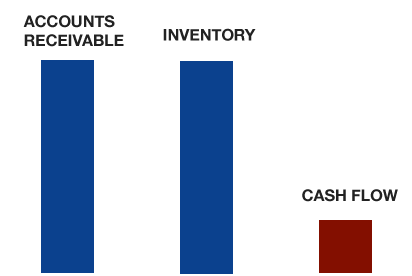
One of the benefits of using common size analysis is that it allows investors to identify drastic changes in a company’s financial statement. It mainly applies when the financials are compared over a period of two or three years. Any significant movements in the financials across several years can help investors decide whether to invest in the company. The net operating income or earnings after interest and taxes represent 10% of the total revenues, and it shows the health of the business’s core operating areas. The net income can be compared to the previous year’s net income to see how the company’s performance year-on-year. From the table above, we can deduce that cash represents 14.5% of the total assets while inventory represents 12% of the total assets.
- The year brought double-digit changes to several line items on the income statement.
- As common-size statements are based on normal statements so, to get better results, you should adjust the values accordingly.
- Comparative statements then may be constructed with the company of interest in one column and the industry averages in another.
- You can use it to see how your business stacks up percentage-wise with another business, even if that business is substantially larger.
- A common size financial statement allows for easy analysis between companies or between periods for a company.
You can use it to see how your business stacks up percentage-wise with another business, even if that business is substantially larger. The common size version of this income statement divides each line item by revenue, or $100,000.
How Do You Calculate Common-Size Analysis?
It is based on the accounting equation that states that the sum of the total liabilities and the owner’s capital equals the total assets of the company. A company has $8 million in total assets, $5 million in total liabilities, and $3 million in total equity. Therefore, along with reporting the dollar amount of cash, the common size financial statement includes a column that reports that How to Figure the Common Size Balance-Sheet Percentages cash represents 12.5% ($1 million divided by $8 million) of total assets. Company management often analyzes financial statement data to understand how the business is performing relative to where it was historically, and relative to where it wants to go in the future. Performing common-size calculations for several different time periods and looking for trends can be especially useful.
- In income statements, line items are most often divided by total revenues or total sales.
- That is a precipitous decline in one year and, if the company has shareholders, it will leave them questioning what went wrong.
- Common size financial statements can be used to compare multiple companies at the same point in time.
- A Vertical Analysis of Financial Statements of a company, in which the amount of individual items of a Balance Sheet of Statement of Profit & Loss are written, is known as a Common Size Financial Statement.
Figure 13.8 “Comparison of Common-Size Gross Margin and Operating Income for ” compares common-size gross margin and operating income for Coca-Cola and PepsiCo. To complete a vertical analysis, you’ll first need to determine what information you’re looking to obtain. For example, many businesses use vertical analysis to compare their financial results to those of other businesses in their industry. Because vertical analysis deals with percentages rather than totals, using vertical analysis makes it easy to compare company performance with other companies, even those of different sizes.
Common-Size Analysis
Common-size income statement analysis states every line of an income statement as a percentage https://online-accounting.net/ of sales. From this, it can be seen that Gross Profit remained the same at 100% of revenue.
- To reiterate from earlier, dividing by total assets is akin to dividing by the sum of liabilities and equity.
- Liquidity Position Of A CompanyLiquidity is the ease of converting assets or securities into cash.
- This allows for a more accurate comparison of items from different statements and different time periods.
- They can make important observations by analyzing specific line items in relation to the total assets.
- Common Size Analysis may also compare a company’s statements to those of a close competitor.
Common size balance sheets also allow internal and external stakeholders to analyze trend lines and see any major changes that may have occurred in the balance sheet. As of your balance sheet date, A/R represents 15 percent of total assets. By looking at the balance sheet, you can see that the majority of your company’s assets are current, with only 25% of assets considered fixed, or long-term assets. The value is all determined by comparing each expense with the total sales.
Common‐Size Analysis
In conclusion, it can be said that the common size income statement facilitates easy comparison. It makes analysis much easier such that the analyst can see what is actually driving the profit of a company and then compare that performance to its peers. Common size analysis, also referred to as vertical analysis, is a tool that financial managers use to analyse financial statements. A Vertical Analysis of Financial Statements of a company, in which the amount of individual items of a Balance Sheet of Statement of Profit & Loss are written, is known as a Common Size Financial Statement.
Transcript : BankFinancial Corporation, Q4 2022 Earnings Call, Jan 30, 2023 – Marketscreener.com
Transcript : BankFinancial Corporation, Q4 2022 Earnings Call, Jan 30, 2023.
Posted: Mon, 30 Jan 2023 15:30:00 GMT [source]
Understand common size income statements and common size financial statements. A common size balance sheet allows for the relative percentage of each asset, liability, and equity account to be quickly analyzed. Likewise, any single liability is compared to the value of total liabilities, and any equity account is compared to the value of total equity. For this reason, each major classification of account will equal 100%, as all smaller components will add up to the major account classification. A common size balance sheet is a balance sheet that displays both the numeric value and relative percentage for total assets, total liabilities, and equity accounts.
In the balance sheet, the common base item to which other line items are expressed is total assets, while in the income statement, it is total revenues. Common-size analysis converts each line of financial statement data to an easily comparable amount measured as a percent. Income statement items are stated as a percent of net sales and balance sheet items are stated as a percent of total assets (or total liabilities and shareholders’ equity).
How do you find the common size percentage of net income?
The common-size percent is simply net income divided by net sales, or 33.6 percent (= $11,809 ÷ $35,119). There are two reasons to use common-size analysis: (1) to evaluate information from one period to the next within a company and (2) to evaluate a company relative to its competitors.
It is not another type of income statement but is a tool used to analyze the income statement. Common size analysis, also referred as vertical analysis, is a tool that financial managers use to analyze financial statements. It evaluates financial statements by expressing each line item as a percentage of the base amount for that period. The analysis helps to understand the impact of each item in the financial statement and its contribution to the resulting figure. On the other hand, horizontal analysis looks at changes in specific dollar amounts for each period, highlighting the changes line-by-line over two specific accounting periods. Horizontal analysis also displays percentage change for each balance sheet item as well. The main idea of financial statements is to give information about the business.

